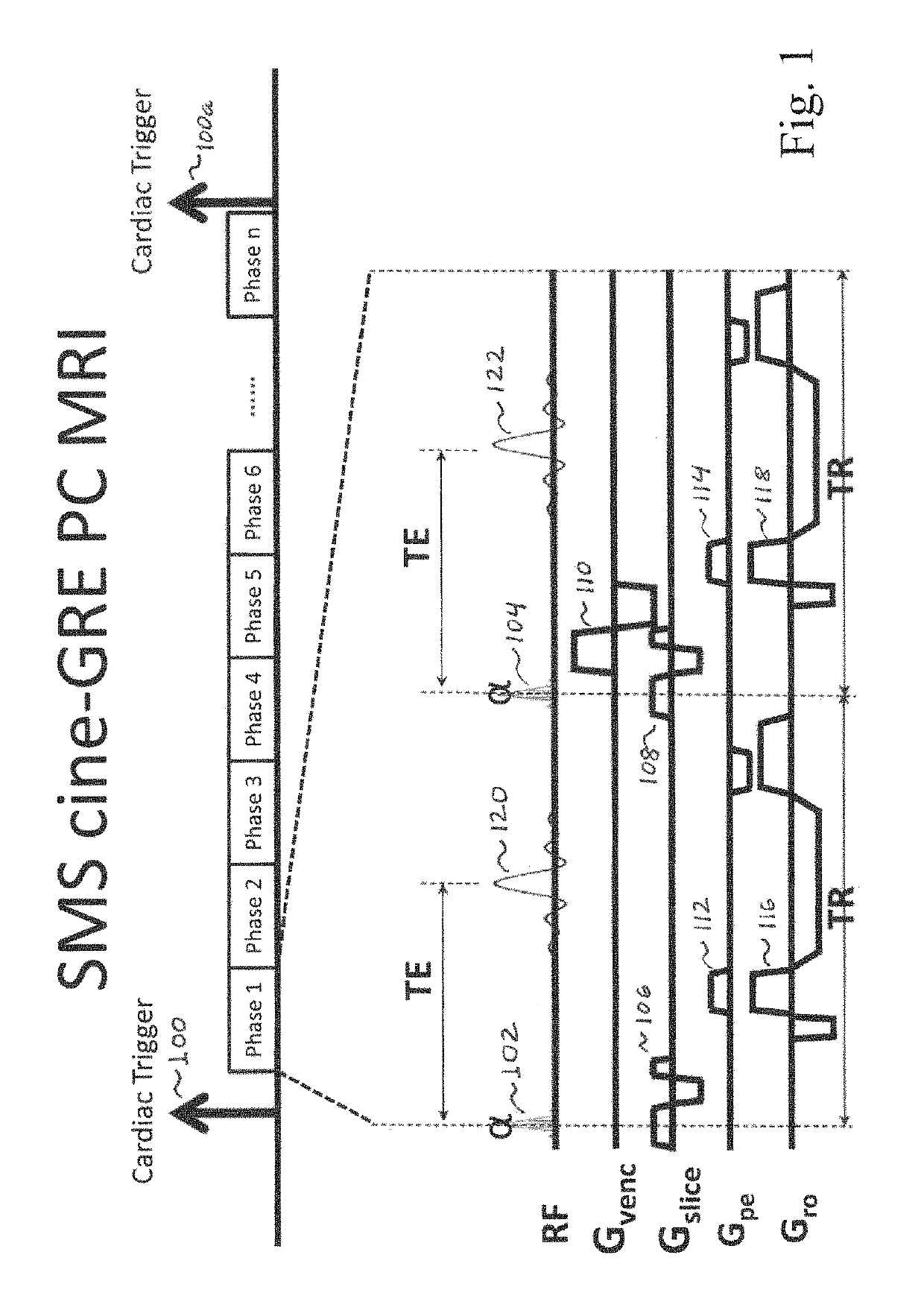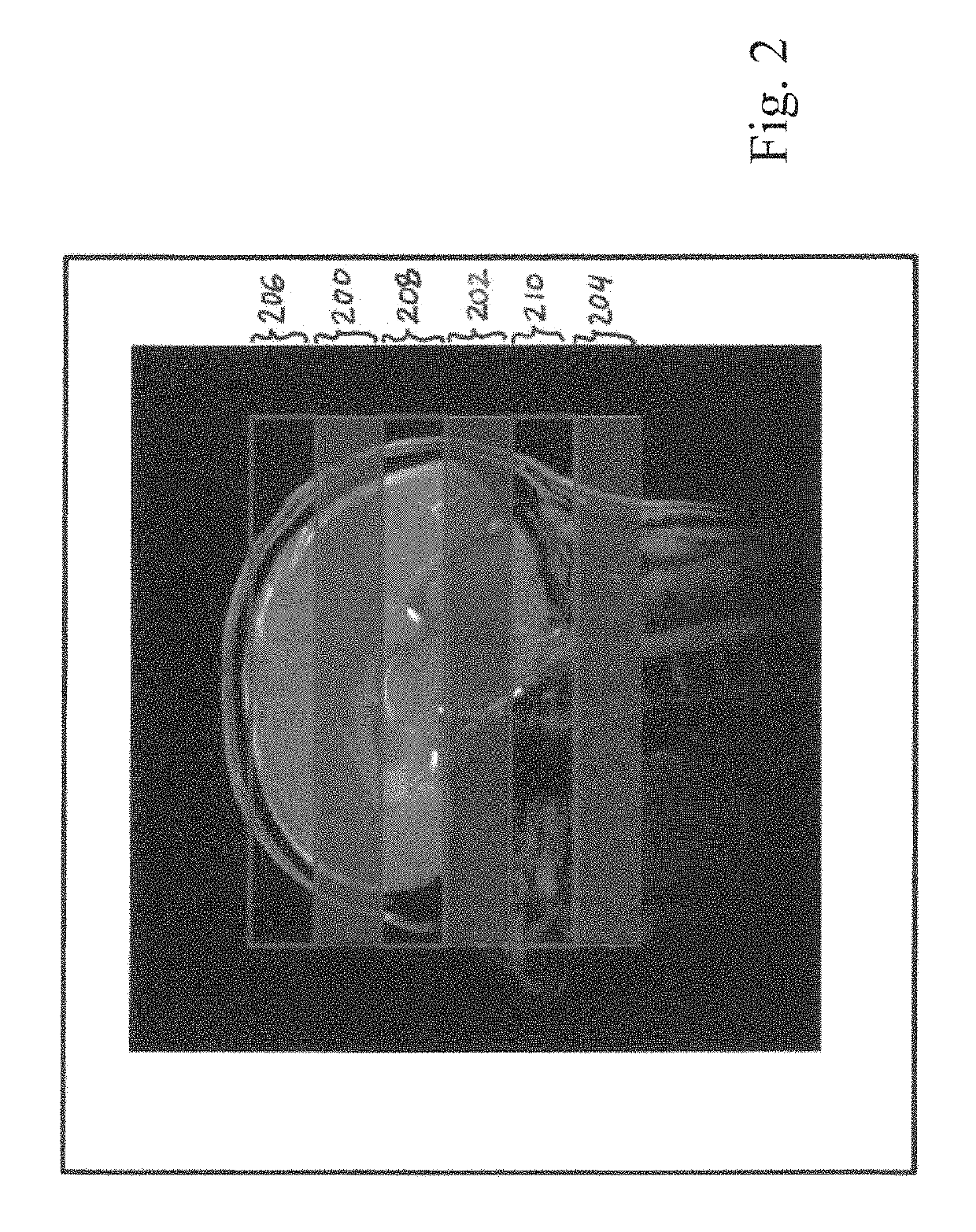Cine phase contrast simultaneous multi-slice and multi-slab imaging of blood flow and cerebrospinal fluid motion
a technology of cerebrospinal fluid and contrast agent, which is applied in the field of magnetic resonance imaging, can solve the problems of inability to use intravenous contrast agent, inability to accurately measure velocity and blood flow, so as to reduce the artifactual lack of blood flow, reduce the effect of distance and accuracy degradation
- Summary
- Abstract
- Description
- Claims
- Application Information
AI Technical Summary
Benefits of technology
Problems solved by technology
Method used
Image
Examples
Embodiment Construction
[0018]A detailed description of examples of preferred embodiments is provided below. While several embodiments are described, the new subject matter in this patent specification is not limited to any one embodiment or combination of embodiments described herein but encompasses numerous alternatives, modifications, and equivalents. While numerous specific details are set forth in the following description to provide a thorough understanding, some embodiments can be practiced without some or all these details. For clarity, certain technical material that is known in the related art has not been described in detail to avoid unnecessarily obscuring the new subject matter described herein. Individual features of one or several of the specific embodiments described herein can be used in combination with features or other described embodiments. Further, like reference numbers and designations in the various drawings indicate like elements.
[0019]FIG. 1 illustrates a non-limiting example of ...
PUM
 Login to View More
Login to View More Abstract
Description
Claims
Application Information
 Login to View More
Login to View More - R&D
- Intellectual Property
- Life Sciences
- Materials
- Tech Scout
- Unparalleled Data Quality
- Higher Quality Content
- 60% Fewer Hallucinations
Browse by: Latest US Patents, China's latest patents, Technical Efficacy Thesaurus, Application Domain, Technology Topic, Popular Technical Reports.
© 2025 PatSnap. All rights reserved.Legal|Privacy policy|Modern Slavery Act Transparency Statement|Sitemap|About US| Contact US: help@patsnap.com



